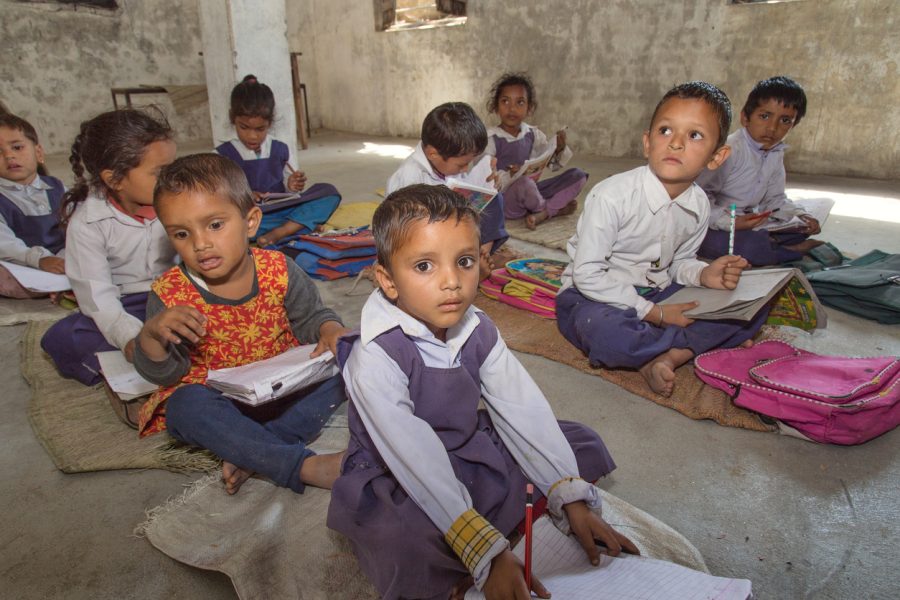
Bihar: Education in tatters with poor administration, abysmal infra
While school enrolment has increased, fall in attendance has become a cause of worry; engagement of teachers in non-teaching jobs is straining the system

Bihar’s school education is battling an unprecedented crisis, derailing the future of millions of students. The deplorable situation came into sharp focus when 12-year-old Sonu Kumar revealed the ugly truth to Chief Minister Nitish Kumar while he was on a tour of his own Nalanda district.
“I will not be able to fulfil my dream of becoming an IAS or IPS officer by studying in a government school,” the boy said. Nitish Kumar was stunned, but the student spoke the truth.
Multiple shocks
At the Tajpur High School in Samastipur for example, boys and girls attend classes on alternate days due to poor facilities. The situation changed after a new principal improved the infrastructure. But it has a staggering 4,000 students.
Bihar was shocked when a video went viral showing students being taught Hindi and Urdu on the same blackboard at the Adarsh Middle School in Katihar district. This happened when the Urdu Primary School was shifted to the Adarsh Middle School.
Children studying in government schools complain they don’t get textbooks on time. When they do, the quality of printing is deplorable, said Navendu Priyadarshi of the Akhil Bharat Shiksha Adhikar Manch.
Shockingly, students in government schools did not get textbooks throughout the academic year 2017-18. The reason? They were not printed on time by the Bihar State Text Book Corporation.
When the government transferred the money for textbooks into the bank accounts of students, some parents used the cash for other purposes.
Enrolment up, attendance down
While enrolment in Bihar’s rural schools has increased, the fall in attendance has become a cause of worry.
The Education Department made surprise checks in schools in Gaya, Nawada, Aurangabad, Jehanabad and Arwal districts last year. It found rooms housing classes 9, 10, 11 and 12 almost empty in the rural areas. An official said that less than 10 per cent of students were present in Classes 9 and 11 while the attendance was less than 5 per cent in Classes 10 and 12.
“A high enrolment rate does not carry much significance if the dropout rates are also high,” he added. The dropout rate at upper primary schools is 4.6 percent while it is as high as 20.5 percent at the secondary level.
Teachers in non-teaching work
The engagement of teachers in non-teaching jobs is causing a strain. Besides the midday meal and Sarva Shiksha Abhiyan, Bihar has at least seven schemes related to uniforms, free cycles, free books and financial assistance in which teachers play varying roles.
They also are expected to distribute below poverty line (BPL) cards, hold awareness rallies, perform election duty and do other administrative work as and when told.
Some teachers, media reports say, are not aware of the basics of the subjects they teach. The government earlier closed 1,773 schools earlier due to poor attendance. There are plans to close another 8,321 schools due to the same reason, claimed a government teacher.
Problems aplenty
Enrolment in government schools rose after several private schools closed down due to COVID. The appointment of around 4 lakh contractual teachers has also taken a toll. They lack motivation as they are contractual workers, said DM Diwkar, former director of the AN Sinha Institute of Social Studies in Patna.
A noted educationist said there was inadequate emphasis on training teachers to upgrade their knowledge and skill.
According to government sources, only 22.1 per cent of the secondary level government schools in Bihar have teachers in all core subjects (mathematics, science, language and social science). At the secondary level, one mathematics teacher teaches a whopping 462 students on an average and one science teacher teaches 437 pupils.
Budget goes on salaries, allowances
Education in Bihar, with an allocation of ₹39,191.87 crore for fiscal 2022-23, received the largest share of the state’s budget of over ₹2.37 lakh crore for 2022-23. But the Bihar Economic Survey (2021-22) revealed that nearly 36.5 per cent of students in Class I are unable to complete even their secondary education.
Bihar has 42,573 primary, 25,587 upper primary, 2,286 secondary and 2,217 senior secondary schools.
According to the government’s own estimate, 68 per cent of the school budget in Bihar goes for salaries, pensions, incentives and other payments. In such a situation, infrastructure creation and other development purposes suffer.
No wonder, Bihar was ranked in the bottom 5 in the NITI Aayog`s school education quality index.
Can the situation improve?
Although the government is spending money on new school buildings, there is a need to scale up the efforts in view of the huge population, Diwakar stated. He also wanted leakages to be plugged.
According to the Annual Status of Education Report (ASER), there has been an overall declining trend in learning levels in government schools since 2016. In 2018, around half of Class 8 students struggled even with simple divisions. A survey revealed that 22.2 per cent of students in the 14-18 age group could not even read Class 2 texts.
The Bihar government has decided to conduct catch-up courses for Classes 2 to 10.
According to a Unicef study, the learning loss and mental health issues were found in over 75 lakh students in Bihar due to limited access to online facilities and confinement to homes during COVID. Only 4.6 per cent of schools in Bihar are equipped with smart classrooms. A mere 0.5 per cent of government schools have digital libraries.


